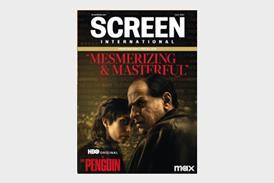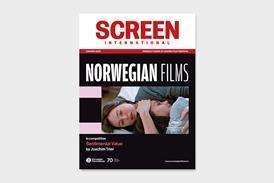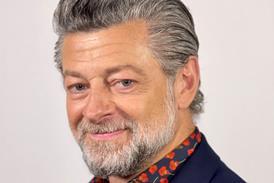Tennessee-born Clay Jeter talks to Jeremy Kay about his feature directorial debut Jess + Moss, which screens in Sundance’s New Frontier section this week.
Through a series of vignettes that chronicle lazy summer days Jeter paints an idiosyncratic portrait of childhood as 18-year-old Jess and her second cousin Moss, 12, idle away the days talking, playing and discovering. The film has already won admirers for its evocative, languid pacing and dreamy West Kentucky milieu.
Kevin Iwashina of Preferred Content represents North American rights and Visit Films is handling international sales.
The story is so intimate and heartfelt – is it pure autobiography?
“The idea for the movie came from a combination of things. The primary location is my great-grandfather’s tobacco farm in West Kentucky. He’d grown up there with his brother and my mum and her younger cousin spent time there, as did my older sister, so a lot of this is drawn from personal experience.”
It started out as two short films, so tell us how you fused them into one overarching feature?
“I had wanted to shoot these two shorts called Jess + Moss in 35mm and Five Dollars in digital. Two weeks before we were going to shoot at the farm we asked how we could turn them into one feature because we had so many ideas. So a three-day stay got extended to seven and even though all our crew had to leave to go back to film school or do some paying jobs we stayed on and filmed it. Sarah [Hagan, Jeter’s girlfriend who plays Jess] and Austin [Vickers, who plays Moss] would be helping me out and holding the boom and that kind of stuff.”
How did you find your cast?
“As I said I’d been dating [lead actress] Sarah for a year and knew she would do it. I was an actor when I was a kid and had this amazing agent called Betty Clark. I needed kids for Five Dollars, which was all children, so I called up Betty and she helped me out, which must have been a tough sell because I had never directed anything before and the story involved children in intense situations. We set up casting sessions and Austin was the first kid, He’d done a play and didn’t have the normal stage mum. He listened and responded and was a natural charmer. He was perfect for Five Dollars and it had to be him for Jess + Moss.”
Sarah and Austin are wonderful together. Was there instant chemistry?
“When I put Austin together with Sarah it was like this magic that I could never have known. They spent a lot of time together annoying the crap out of each other. I told them to only refer to each other as Jess and Moss, even when the camera wasn’t rolling. I gave them this tape recorder and a lot of the voice over in the film comes from stuff they just came up with while they hung out.”
The story seems so fluid. How much of it was set down and how much was improvised?
“I had the outline for the story and often wrote on the day of shooting. There was never a full screenplay but just these pages of ideas. My sister and mother get story credits on this, too.”
The film feels so organic. Were you tempted to tinker with it a lot?
“It’s so hard to get a full green light to make something, especially when you’ve never made something before. Getting into Sundance was the best thing because we could easily be tinkering with this movie for another two years. It was frightening and amazing when we heard because everybody who said they’d help did and pulled together to get this ready. We literally finished last a few days before the festival.”
The look of the film evokes early David Gordon Green on films like George Washington and All The Real Girls. How did you create that look?
“I’d been working as a cinematographer since I’d got out of film school [USC] so I had a camera and a collection of old film stock. You never want to throw that stuff away so we shot our movie on about 35 different films stocks. “
How did the shoot go?
“We shot in 15 days over the course of a year. We shot seven days up front [in July 2009] and put it together to see the shape of the movie. We went off and did other jobs in between and went back to it in March 2010 and then July. Everyone who worked on the project worked for free. Luckily we were in a position where we had a small enough amount of money from myself and my parents so we didn’t have financiers breathing down our neck. The project had lulls. The editor would have to take off time and do some commercials and then work a bit more on this movie.
This was one of the hottest June and Julys on record. When we went back in March it was cold but the actors were wearing the same clothes. It was intense. We were out in the middle of nowhere. We were roughing it.”
How would you describe the film?
“The movie is very much about landscape and a documentation of space and time. For me it’s really about childhood and some of the fleeting moments that you don’t notice always but that create existence. Se against that is the tragedy of growing up.”






















No comments yet